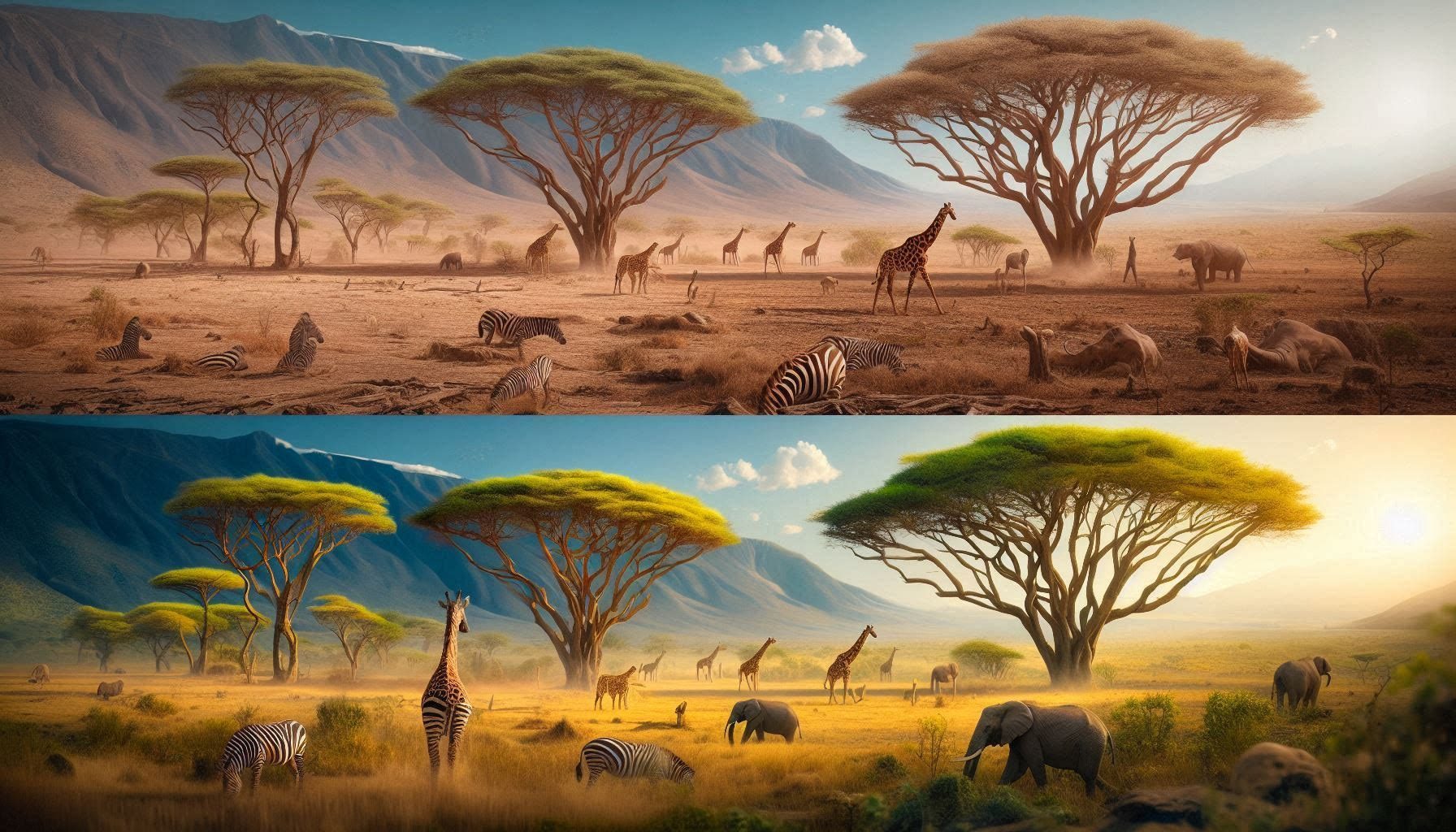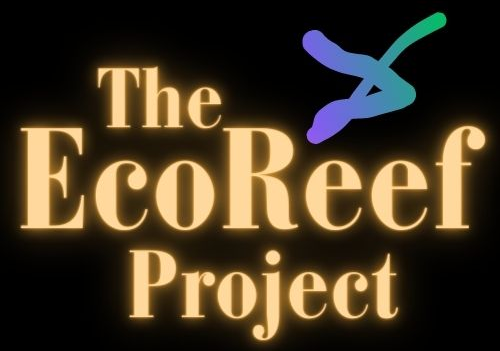
Arusha From Desert to Savanna
In the heart of Tanzania lies Arusha, a region that has faced the harsh realities of desertification. Once a barren and unproductive land, Arusha has undergone a remarkable transformation, turning into a thriving savanna. This incredible change is a testament to the power of innovative land management practices and the resilience of the local communities.
The Challenge of Desertification
Arusha, like many regions in East Africa, has struggled with severe desertification. Prolonged droughts and the impacts of climate change left the land dry and unproductive, threatening the livelihoods of its inhabitants. Traditional farming methods were no longer sufficient, and urgent action was needed to restore the land and secure the future of the local communities.
The Solution – Digging Semi-Circular Pits
The breakthrough came with the introduction of a simple yet effective technique. digging semi-circular pits, also known as bunds. These pits are designed to capture and retain rainwater, preventing it from quickly evaporating from the dry soil. By holding the water in place, these pits allow it to seep into the ground, replenishing the soil’s moisture and making it more fertile.
Community Effort and Collaboration
This initiative was spearheaded by a dedicated non-governmental organization (NGO) and supported by the local communities. Together, they dug over 200,000 pits in a matter of months. This massive effort was not just about digging holes; it was about educating and empowering the people of Arusha to take control of their environment and future.

The Results Are A Flourishing Savanna
The impact of this initiative is long term & has been nothing short of transformative. The once dry and barren land is now covered in greenery. Grass seeds sown in the pits have germinated, binding the soil and preventing erosion. This has created a more stable and fertile environment, allowing other plants to take root and flourish.
In addition to the pits, several grass seed banks have been established, and millions of trees have been planted using natural regeneration methods. These efforts have not only restored the land but also increased pasture and arable land, providing more resources for the local communities.
Short-Term Impact
In the short term, the immediate benefits of this initiative are evident. The semi-circular pits have significantly improved water retention in the soil, leading to the rapid germination of grass seeds. This has provided immediate ground cover, reducing soil erosion and creating a more stable environment. The increase in vegetation has also begun to improve the local microclimate, making the area more hospitable for both plants and animals.
Long-Term Impact
In the long term, the transformation of Arusha into a thriving savanna will have profound and lasting effects. The restored land will support increased agricultural productivity, providing food security and economic opportunities for local communities. The establishment of grass seed banks and the planting of millions of trees will ensure the sustainability of these efforts, promoting biodiversity and resilience against future climate challenges. Additionally, the success of this project serves as a model for other regions facing similar challenges, demonstrating the potential for community-driven, sustainable land management practices to combat desertification on a larger scale.
Ecological Benefits
The ecological benefits of transforming Arusha from a desert to a savanna are substantial. The increase in vegetation has led to a significant improvement in soil health. The roots of grasses and trees help to bind the soil, reducing erosion and increasing its organic matter content. This, in turn, enhances the soil’s ability to retain water and nutrients, creating a more fertile environment for plant growth.
The new vegetation cover has also created habitats for a variety of wildlife. Birds, insects, and small mammals have returned to the area, contributing to a more balanced and diverse ecosystem. The presence of these animals helps to maintain the health of the savanna by controlling pests and pollinating plants.
Furthermore, the increase in plant biomass has a positive impact on the local climate. Plants absorb carbon dioxide during photosynthesis, helping to mitigate the effects of climate change. The shade provided by trees and the increased humidity from vegetation also contribute to a cooler and more stable microclimate, benefiting both the environment and the local communities.
Why These Ideas and Projects Are Good or Bad for the Future

Good for the Future
———————–
Sustainability
These projects promote sustainable land management practices that can be replicated in other regions facing similar challenges. By focusing on low-cost, community-driven solutions, they ensure long-term viability and resilience.
Biodiversity
The increase in vegetation and the creation of new habitats support biodiversity, which is crucial for maintaining healthy ecosystems. A diverse ecosystem is more resilient to environmental changes and can provide a range of ecosystem services.
Climate Mitigation
By increasing plant biomass, these projects help sequester carbon dioxide, contributing to climate change mitigation. The improved microclimate also benefits local communities by providing cooler and more stable weather conditions.
Economic Benefits
Restored land can support increased agricultural productivity, providing food security and economic opportunities for local communities. This can lead to improved lifestyle, health, livelihoods and reduced poverty.

Potential Challenges
————————–
Initial Investment
While the techniques used are low-cost, there is still an initial investment required for tools, seeds, and training. Securing funding and resources can be a challenge, especially in economically disadvantaged regions.
Maintenance
Ongoing maintenance and monitoring are essential to ensure the success of these projects. Without continued support and engagement from the community, there is a risk that the restored land could degrade again.
Scalability
While these projects have been successful in Arusha, scaling them up to larger areas or different regions with varying environmental conditions may present challenges. Each region may require tailored approaches to address its unique challenges.
Climate Variability
As climate change continues to impact weather patterns, there is a risk that extreme weather events, such as prolonged droughts or heavy rains, could undermine the progress made by these projects.
Join the Discussion
We invite you to join the discussion on the transformation of Arusha and the broader implications of sustainable land management practices. What are your thoughts on the methods used to combat desertification? Have you seen similar initiatives in other parts of the world? How can communities and organizations collaborate more effectively to address environmental challenges?
Share your insights, experiences, and ideas. Together, we can learn from Arusha’s success and explore new ways to create a more sustainable and resilient future for all.
Conclusion
The success in Arusha serves as a powerful example of how sustainable land management practices can combat desertification and restore degraded land. It highlights the importance of community involvement and the potential for simple, low-cost solutions to make a significant impact. As the world continues to grapple with the effects of climate change, the story of Arusha offers hope and inspiration. It shows that with determination, collaboration, and innovative thinking, it is possible to turn the tide against desertification and create a more sustainable and prosperous future for all.
#ArushaTransformation #DesertToSavanna #SustainableLandManagement #ClimateAction #CommunityEffort #EcoRestoration #GreenArusha #WaterConservation #SoilHealth #Biodiversity #ClimateResilience #GrassRootsChange #EnvironmentalSuccess #SavannaRevival #InnovativeFarming #LandRegeneration #EcoInnovation #TreePlanting #GrassSeedBanks #LocalEmpowerment #DesertificationCombat #SustainableFuture #NatureRecovery #EcoImpact #GlobalInspiration #ClimateHope #GreenFuture #ArushaSuccess #EnvironmentalAwareness #SustainablePractices







Real Estate very informative articles or reviews at this time.
Muchas gracias. ?Como puedo iniciar sesion?
Long term viability will require incorporating a cycle of fire as has been reintroduced in Australian by Aborigenees working on ecological preservation & renewal.
Long term viability will require incorporating a cycle of fire as has been reintroduced in Australian arid regions by Aborigenees working on ecological preservation & renewal.